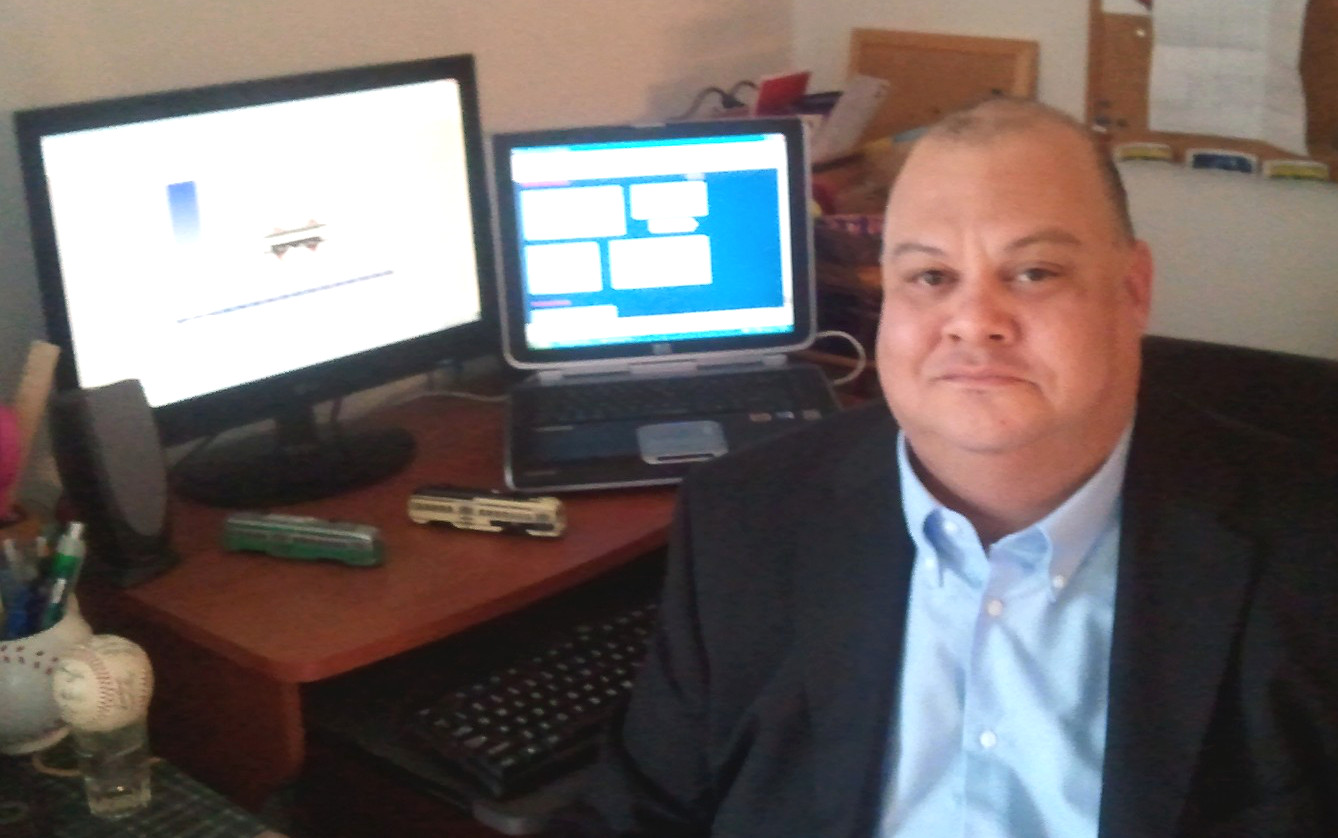
Jonathan Werner, Director of Procurement for Custom Traxx
Custom Traxx is a leader in the model train hobbyist community, creating an exceptional product for a high end market. You can find out more at :
Disclosure—I have known JW for 30 years, since we were kids together in Bismarck, ND. He and I got into mischief together, and I hope we are in the clear now, due to the statute of limitations. Jon is an engineer, entrepreneur, and former Marine. He is also a sports raconteur, and a great friend.
Transcript
Tell us a little bit about what you make.
We are really a niche within a niche. Take the niche market of model railroaders, then take that down to the sub-set of enthusiasts who only model the streetcars which used to be a part of everyday life in this country.

Custom Traxx supports the HO scale electric traction modeler by supplying authentic detailed decal finishing sets, heralds, destination signs, and other markings for streetcars, and interurban railway vehicles as they ran in most American and Canadian localities. We also offer a growing line of parts including selected traction re-powering items; HO scale traction mechanisms, trolley poles, and HO scale ORR girder rail, turnouts and crossings, as well as a number of specialty parts from our strategic partner Bowser as well as several other manufacturers in the streetcar modeling industry.
Currently, our flagship product is the line of HO scale models we have produced with Bowser of the historic traction vehicles operating on San Francisco’s F Market Line. We just gave our first public glimpses of the newest model in this line, the Perley-Thomas 900 class car which originally ran In New Orleans, and are running today in both New Orleans and San Francisco. We are scheduled to have this model available by the end of the year in not only in its original New Orleans paint scheme, but also in the marking of a few other cities where these cars were in service, such as Atlantic City, Chicago, and Philadelphia.
A more detailed overview of Custom Traxx can be seen in a public album on our Facebook page.
When did you start making this?
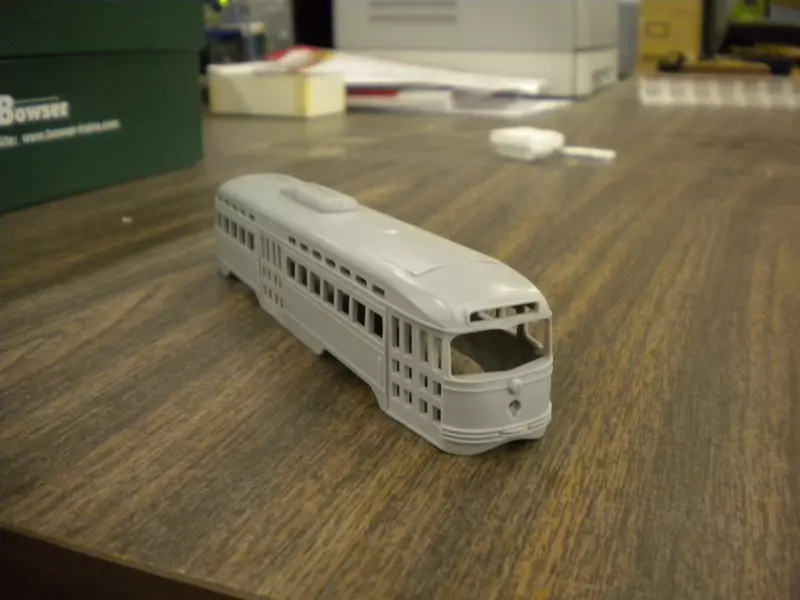
This has been approximately a five-year process. Custom Traxx has actually been in existence since 1992, but the F Market Line was our first “full-blown” venture into mass production.
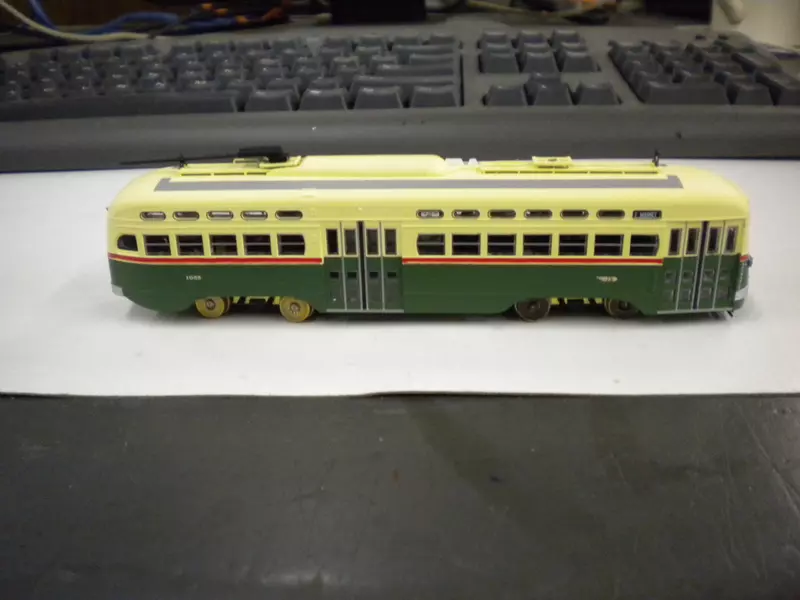
A PCC body during the F Market Line project testing phase , May 2009
How long did it take you to develop it?
One of the first F Market testing prototypes, May 2009
The F Market Line went into the “drawing board” phase in 2008. We introduced our working prototypes at the East Penn Traction Club’s bi-annual meet in Philadelphia in May of 2009, and the first models in that line were on store shelves by the end of that year. Since them, we have introduced new models in groups of four or five roughly twice a year.
What changed along the way?
Our entire concept of how to manufacture these things. Before the F Market Line, traction modeling was a world of scratch building, modifying existing kits, and generally scrounging for parts and taking a “make-do” approach because it is truly a niche hobby.
Then along came a technique known as resin casting. Resin had some serious upsides, namely it was economical and patterns and molds could be made inexpensively, which allowed for small and/or custom production runs. That fact in and of itself was a massive factor because most modelers want a specific model from a specific time, and from a specific city.
Resin also proved troublesome from a few perspectives. First of all, certain resins have durability issues, such as warping and cracking. Mass production was a problem because the molds generally didn’t have a long enough lifespan. But most importantly, working with resin could be dangerous, particularly inhaling resin dust from sanding the bodies before painting.
In other words, resin casting put the idea in our heads about taking the hobby out of the scratch-building world, but resin casting also proved it would not be the vehicle to get us there.
Did you run into times that you needed to redesign part or all of your product?
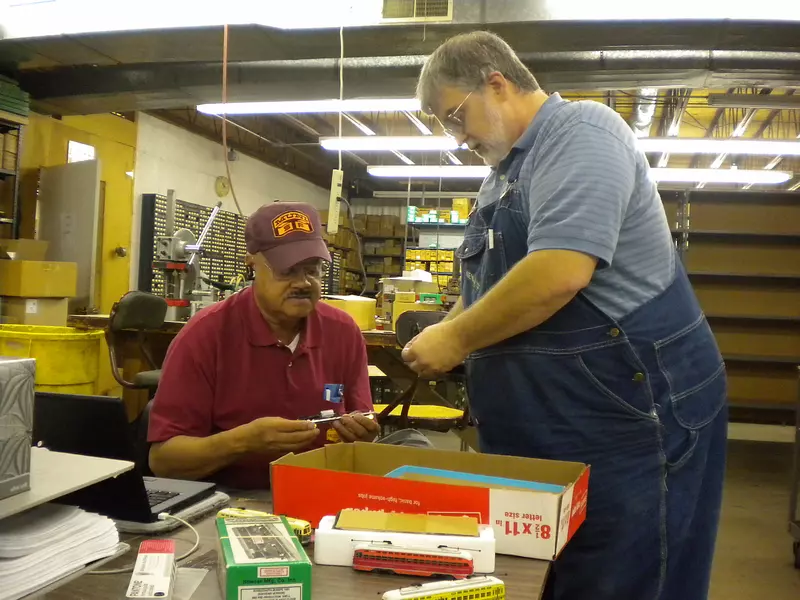
Constantly. There was the aforementioned issue with how we would even manufacture these models. Then, there were constant issues with fitting all the needed component into a cramped physical space. For a host of reasons, weight of the models proved to be a crucial issue. Then came the challenges of putting digital command and control (DCC) systems into these models. They were becoming all the rage in other model railroading circles, and it was clear to us that failing to incorporate this technology doomed us to obsolescence. However, that also meant fitting a circuit board with wiring into an already cramped space.
Custom Traxx CEO George Huckaby with Bowser CEO Lee English during the F Market project’s testing phase, May 2009.
How did you figure out your manufacturing process to make this? Have you changed it since you first laid it out? Did you consider outsourcing or off shoring?
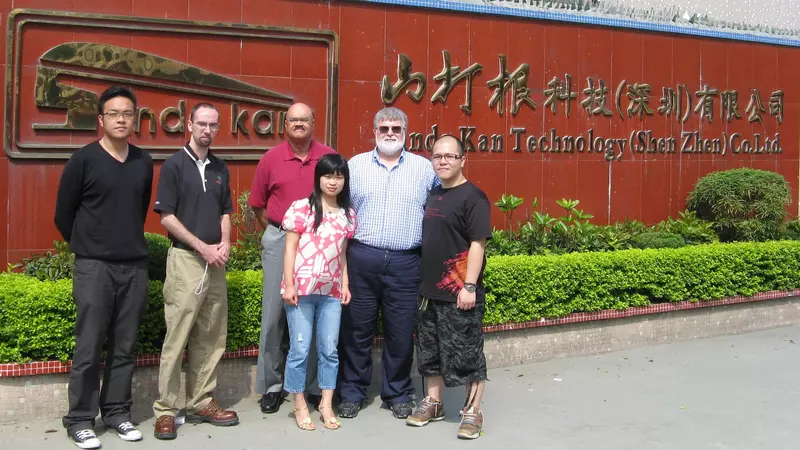
Let me take that question by question. We came to our manufacturing decision essentially through reverse engineering. When the resin casting option proved problematic, we asked the question “How else can we build what we want, and in the quantities we want?”
George Huckaby and Lee English with some other project members at the manufacturing facility in Shenzen, China
It is important to note we asked this question at a point where we hadn’t yet decided to make this a business; we were still just a bunch of hobbyists looking to build something we wanted. Custom Traxx was still a “garage operator,” providing decals and other peripherals. We’d never done a “full-blown” effort into models. That means we never really laid out a vision of a manufacturing process as much as we laid out requirements. As we continued through that process, going off-shore proved to be the only real option, for several reasons.
Many people think the option to go overseas is simply financial, but there’s more to it than that. Granted, in our case the cost-per-unit to manufacture simply could not be ignored. Even after you factor in time, transportation, and the other logistical issues involved in having your production floor 10,000 miles and twelve time zones away from your management capacities, the decision to go off-shore was an easy one.
But another reason that made that decision an easy one was all the regulatory stuff the multiple levels of government will put you through in this country. Without getting into specifics, when you factor in the time and money involved in navigating that sea of red tape if you wanted to manufacture something in this country, you can have something built in China, let it spend two months in transit, and still have it on the shelves in America before you can get through the governmental hoops.
In my opinion, there’s something fundamentally wrong with that, and if we as a nation want to remain economically relevant 50 or 100 years from now, we need to stop the finger-pointing over “they are sending our jobs overseas” and start asking why that is happening. That includes asking the hard questions nobody wants to deal with, such as if we waved a magic wand and created 5 million new manufacturing jobs in the country, would our infrastructure even be able to support that?
The answer is probably not, because we haven’t made any significant upgrades to our infrastructure in 50 years. That’s in direct contrast to countries like China, Vietnam, and several of the former Soviet Bloc nations who are all increasing their manufacturing capacity.
The fact is that like it or not, globalization is here. It has been here since the days of the Silk Road; it’s the whole reason man learned to build ships to cross the oceans, and the technology available to us today is only furthering that. The people who will tell you differently tend to be good, old-fashioned isolationists, and any economic historian who is being intellectually honest will tell you there was a precise term for the last time America deliberately choked off foreign trade. It was called the ”Great Depression.”
Twenty years ago, Mexico was the “stealing our jobs” boogie-man. Now it’s China. In the future, it will be Vietnam or one of those former Soviet bloc nations I mentioned. The other day, I bought a shirt that was made in Lesotho.
Like I said, globalization is here. It’s time to address that as fact, then plan and act accordingly.
How did you find capital to get started?
We didn’t. After the financial panic of 2008, we knew we had no chance of getting a loan. This all came out-of-pocket and leveraged with partnerships. In many ways, all we really did was take technology that either existed or was emerging, and brokered it into packages that fit our needs. As long as we kept making those so-called “win-win” deals, the momentum kept growing.
But to be honest, this isn’t a “big-cap” venture. Again, it really started as a couple of hobbyists who weren’t so much about the proverbial “better mousetrap;” rather we just were looking for a way to build the mousetraps we wanted.
If you could go back in time, and talk to yourself at the beginning of this adventure, what would you advise yourself to do? You must have learned a lot since then, so what lessons would you say stick with you?
My answer for that is more of an observation about advice, and from whom you get it.
When you take advice, you really must understand where the advisor is coming from. For example, the words from the guy who tells you not to worry about risk when you discover he’s floating on some pain-free venture capital…well, those words ring a bit hollow. The same goes for the guy who tells you social media isn’t important, then you find out he’s running his whole business off an old-school land-line answering machine in his basement. My point is sometimes we tend to listen to advice that fits our vision; the old “people hear what they want to thing.” When words fit into our ears just right, sometimes we don’t do the due diligence. And that’s to our peril.
What technology do you use for design?
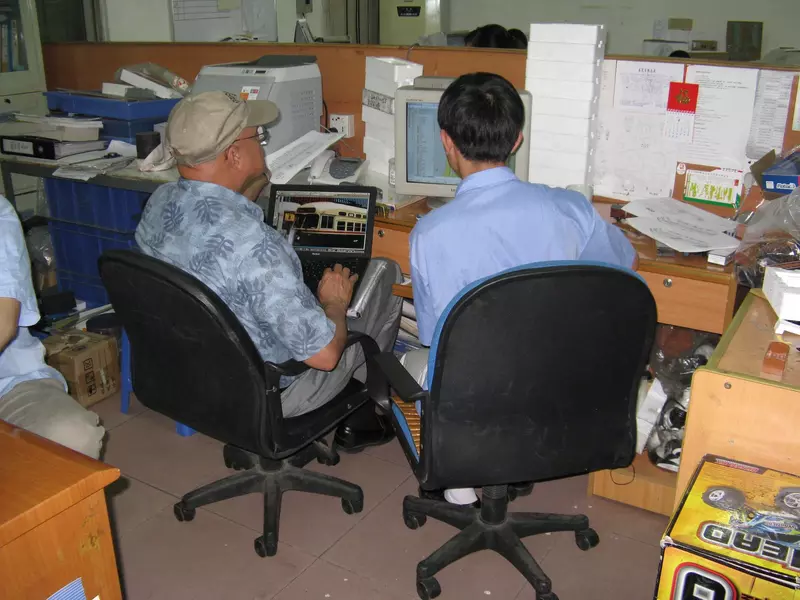
George Huckaby reviewing specifications with a project engineer in Shenzen, China
We are heavy users of CAD. Our partners at Bowser use a lot of CNC. I can see a need for ERP in the future, especially as the partnership continues to develop. CAD is mission-critical because one thing we learned about manufacturing off-shore is that our procurement packages needed to be flawless. When your production floor is 10,000 miles away, there’s no such thing as “fixing in production.” Once you flip the switch, the process doesn’t stop until you have a finished product. If it wrong, you just have to eat it and start over. For us, or for anybody like us, that would have been a fatal blow.
We have experimented with several CAD applications, but we really aren’t married to any one in particular. That may sound a bit strange, but we have a unique problem regarding complex curves. Without getting to detailed, we are in a world which demands a high level of accuracy in a model as compared to the prototype. Compound that with the fact we are modeling things which were designed anywhere between 60 and 100 years ago, with design techniques ranging from clay sculptures to pencil drawings…to make a long story short, there are challenges in replicating curves with a computer that weren’t necessarily designed with a mathematically-based approach. So, we are always looking out for whoever might build the proverbial “better mousetrap.”
Having said that, personally, I prefer programs that support *.dwg files. They are the closest thing the CAD world has to universal, and when you want to keep the ability to move around, that’s important.
It’s also a crucial component because as I’ve said before, when dealing with manufacturers who are on a different continent and have a different culture, precision in your procurement packages is essential.
How long does it take you to get a new product designed and out to the market?
The timeline in our product development has some fixed factors and some variable ones as well. The actual production itself, meaning the time from the molds are cast to the time the model bodies are complete is essentially a function of time per unit multiplied by number of units being made.
If we are talking about measuring from conceptual phase to putting boxes on store shelves, I can describe the time line like this:
Concept: “Let’s build car X. There’s one at Y museum we can use as a prototype.” Assuming we believe there is a viable market for car X, that’s the extent of this step.
Design: Variables based on phases…The complexity of the body type to be modeled and the number of paint schemes in which the model will be produced.
Production: As I said, time per unit multiplied by number of units.
Foreign Transport: Expect 30 days by sea from Asia
Customs: One of the biggest variables in the process. Dealing with Customs is like dealing with a building inspector…you never really know what you are going to get. Expect five days
Domestic Transport: Everything goes to our partner’s facility in Pennsylvania, and distribution to retailers happens from there, as well as direct on-line sales.
The bottom line. From start to finish, roughly six months.
What is the worst advice that somebody gave you as you were building your operation?
George Huckaby (Custom Traxx founder and CEO, and JW’s father) may have a different answer to this question, but to me, the worst advice I heard came from the nay-sayers to manufacturing off-shore. These were the people who told me nobody would buy models made overseas; these were the same people who lined up to buy them.
How do you innovate? When you get the next great idea for a product, or improving an existing product, where do the ideas come from, and how do you make it real?
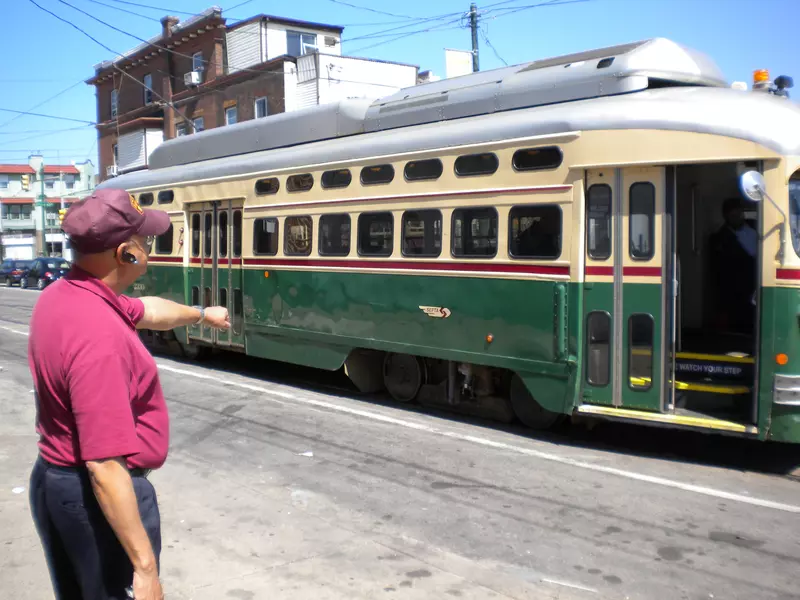
George Huckaby pointing our details on a SEPTA PCC-II in Philadelphia
The re-emerging interest in public transit in this country is doing that for us. We started this with the PCC cars running on the San Francisco’s F Market Line. Since then, several other cities have gone on to bring back vintage rail vehicles. Just a few examples; San Diego has some PCC cars running on a line its Gaslamp district. Toronto is running some restored PCCs. Kenosha, Wisconsin has a heritage railway outfitted with PCC cars. And these aren’t museum pieces, these are fully-restored vehicles operating in revenue service.
We have a firm belief in only modeling things which are running on real rails somewhere, because people model what they see. As more cities bring back these vehicles, it simply becomes a process of determining which ones have enough market appeal to warrant putting them into production.
In terms of technology, the big thing we’ve done is to be on the edge of bringing DCC into the traction modeling world. This is the technology that allowed model railroaders to have models with realistic sights, sounds, and lighting, not to mention the ability to control multiple trains on the same layout from a single controller, or to stream video from a train to your smart-phone, or to even use to your smart-phone as a control device.
Again this was the results of our building relationships with companies already in the field like Soundtraxx and Train Control Systems. The Tsunami© decoder from Soundtraxx, and Train Control System’s advances like WowSound© and KeepAlive© allowed us to develop model functions specific to traction vehicles.
How do you connect with your customers and fans? How did you build a community of people interested in your product and ideas?
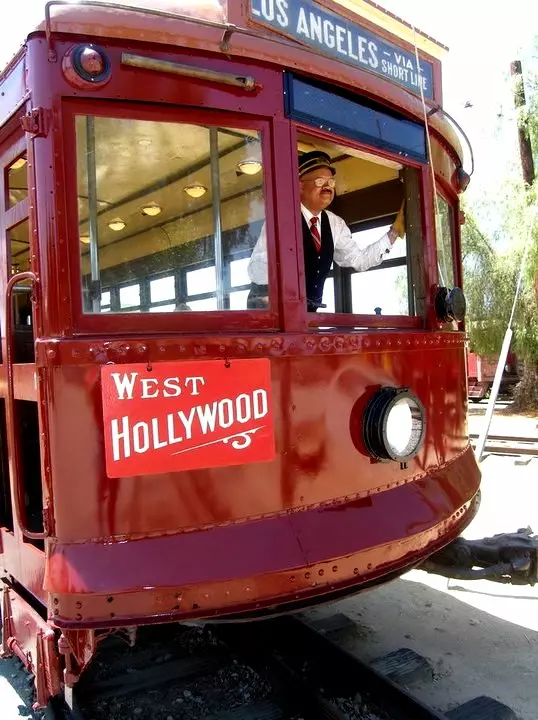
George Huckaby operating a vintage Pacific Electric vehicle at the Orange Empire Railway Museum, Perris California
Actually, this is part B to the answer to your last question. Before all these cities began running these vintage vehicles, to see them you had to go to a museum. To this day, the various railways museums around the country are the best places to do research for new traction models.
Really, this is another area where our emphasis on relationship-building pays off.
When many of these cities started putting these vehicles back on the streets, they didn’t have anybody who knew anything about maintenance and operation of them. They literally had no choice but to go to museums.
George Huckaby has been a member of the Orange Empire Railway museum in Perris, California for forty years. Not long after he started taking me out there, I was in the booth selling tickets . Now, forty years later, George is the CEO of the museum, and we are both using our experiences at OERM in many ways today.
That is really why we believe so strongly that the relationships between modelers, museums, and present-day transit systems can be very beneficial to all parties involved.
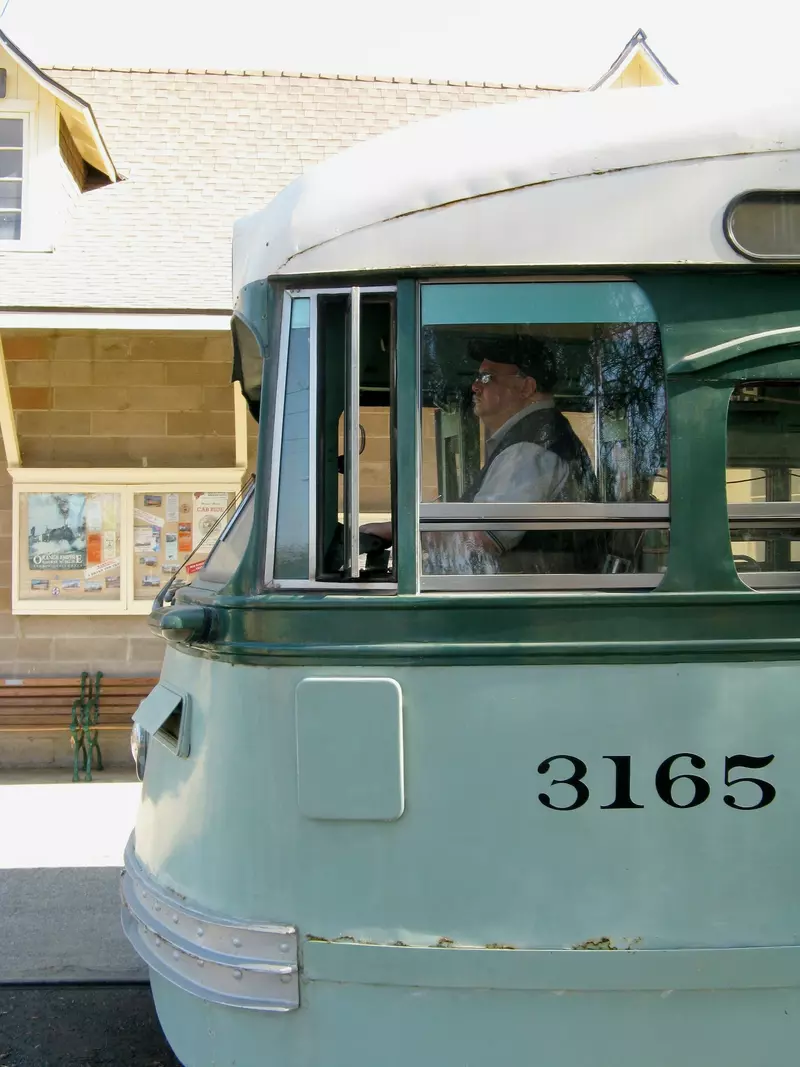
For example, the car shown above, Los Angeles Metropolitan Transit Authority (formerly Los Angeles Railway) Car #3165 was originally built for Twin Cities Rapid Transit in 1948 before being sold to LAMTA in 1953. Since we had intimate knowledge of its history, we knew that if we were to model this car, we would have to account for some of the unique details specific to cars built to operate in the harsh winters of Minnesota; features that may not necessarily be present in the car’s current Southern California museum life.
The knowledge gained from those relationships places us in a unique position to work with many modelers, other manufacturers, and even municipal transit operations to provide technical assistance, specification evaluation and verification, functional testing and design revision, and even maintenance and operational advice for the transit operators. Let me give you some more examples.
Massachusetts Bay Transit Authority (Boston) contacted OERM with questions about the braking system on their fleet of pre-World War II fleet air-electric PCC cars. OERM has been running just such a car for years; Los Angeles Railway #3001, a pre-war “Air-Electric” PCC built in 1937. The knowledge we had of that particular car also allowed us to offer paint and specification to another manufacturer for their production of a model of that car.
Through the relationship Custom Traxx established with San Francisco MUNI during the development of the F Market PCC models, we gained the ability to gather specification data on other MUNI vehicles, such as MUNI’s Breda Light Rail Vehicle. We then shared this data with another model manufacturer and offered technical assistance on their Breda LRV model project.
Another benefit of our relationship with MUNI was that we were granted permission to examine some pieces held by the Western Railway Museum, largely due to that organization’s relationship with MUNI. This had a major impact on our plans to model the San Francisco “Torpedo” double-end PCCs.
So, how does this all answer your question? The traction modeling world is genuinely a small one; the more places where we can make our mark can only mean getting visibility to our efforts where we may have not had it before. Many transit workers become museum volunteers, and many museum volunteers are modelers. On top of that, I mentioned earlier we only model vehicles which are actually running somewhere. By being able to say we are part of the resurgence of the use of vintage rail vehicles in actual revenue service on several transit systems, when people want to model those systems, they will already have the Custom Traxx name in their heads.
It seems like one of your competitive advantages is your R&D. You are intimately aware of your target product’s life history, and technology that is demanded by your customers.
The beautiful thing about model railroad enthusiasts is that they are not shy in sharing their opinions. As I’ve said, these are people who demand a very high level of accuracy in a model. So, when you unveil a prototype, you will get plenty of input. Again, this is where our relationships with various museums and transit agencies are in valuable. It gives us the ability to get almost any type of information we need for either no or very little cost. That approach also plays big when it comes to developing new technology. The partnerships we have formed with other manufacturers in the industry mean we can actively share information and expertise to develop new products and/or technology.
How did you figure out pricing for your products? This is a key issue for a lot of new manufacturers?
That’s a really good question, because pricing was really a key part of making the decision to build these ready-to-run models. Let me explain that. Ready-to-run models (meaning those that you could pull out of the box, drop on your track and away they go) were a rarity in the traction modeling world before Custom Traxx. Everything was kits…kits you assembled, painted, and put decals on yourself. With some manufacturer’s kits, you just got the body and the floor; the power and the decals were up to you to find. That meant you could pay $150 for a kit, and another $75 to power it and another $25 to put decals on it, if you could find them.
We figured out if we took a mass-production approach and integrated all the stuff you would need to buy to complete a kit into one ready-to-run model, we could offer a basic unit originally priced around $150. Naturally, technology advances such as DCC and sound were priced above that, but we knew for a basic painted and running model we had to stay below $200.
Where will your market, product, or business be in 5 years?
I’m not a big “crystal ball” guy, but I will say this. The opportunities to model vehicles which are running on the street are limited. That means we are headed for a change no matter what. Personally, I think it is probable we will be making models of the current light rail vehicles in the future. It is definite we will have a new market in five years. If you go to a model railroad show now, especially one geared toward traction modeling, you are going to see a disproportionately high number of gray-haired people. Our ability to remain viable is directly tied to our ability to get younger enthusiasts engaged in the traction modeling hobby.
This is why OERM hosts a number of “Thomas the Tank Engine” functions per year. All we have to do is get the kids onto the museum property and let them see out fleet of traction vehicles in operation. Since I am based in Lafayette, Indiana, this is why I have regular interaction with a large and established model railroad club at Purdue University.
Regardless, five years from now we will be marketing a different product to a different market.
How have you dealt with “Near Death Experiences?” Any advice to a new entrepreneur, who is scared out of his/her wits?
Well, just about anything can be a “Near Death Experience” in a start-up if you don’t make the right decisions at the right time. In our case, we really were fortunate in several senses. First, we knew a lot of the pitfalls from doing business in this market from having talked to several other entrepreneurs. Second, we knew where the fatal mistakes were in the process because we were able to draw on the experiences of others. Most importantly, we knew that over-reaching was a death sentence. This isn’t a market where you can generate a wide range of revenue streams. We knew we had to be deliberate in our actions, very much more the “tortoise” than the “hare.” I get that approach may not work in other areas, but I can’t see any arena in which interacting with other business owners and having as much useful knowledge as possible can’t improve your decision-making.









